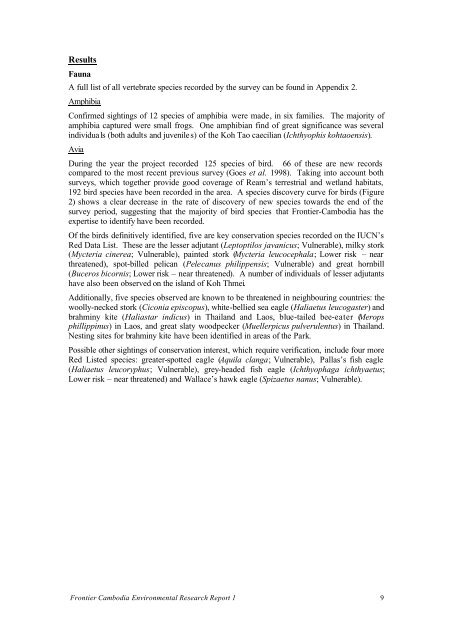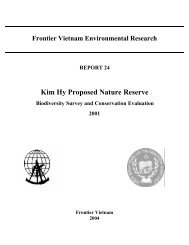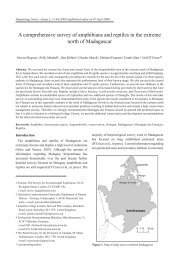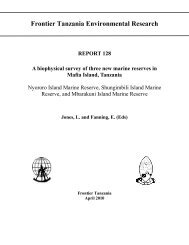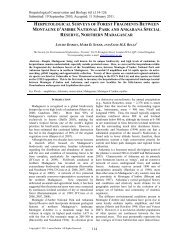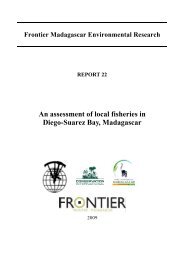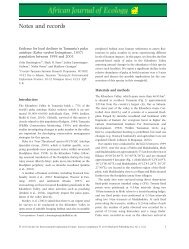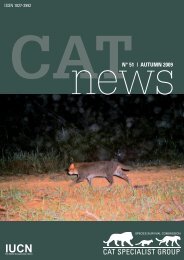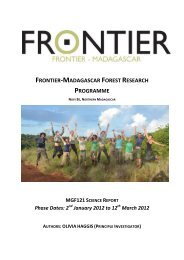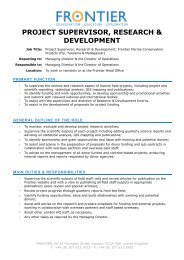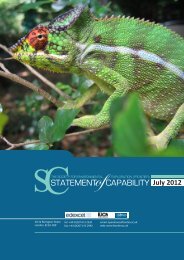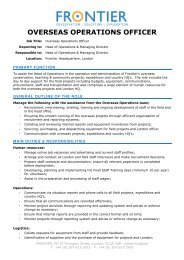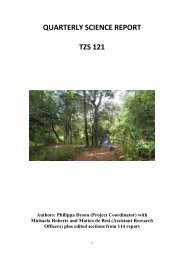Ream National Park Twelve Month Report
Ream National Park Twelve Month Report
Ream National Park Twelve Month Report
Create successful ePaper yourself
Turn your PDF publications into a flip-book with our unique Google optimized e-Paper software.
Results<br />
Fauna<br />
A full list of all vertebrate species recorded by the survey can be found in Appendix 2.<br />
Amphibia<br />
Confirmed sightings of 12 species of amphibia were made, in six families. The majority of<br />
amphibia captured were small frogs. One amphibian find of great significance was several<br />
individuals (both adults and juveniles) of the Koh Tao caecilian (Ichthyophis kohtaoensis).<br />
Avia<br />
During the year the project recorded 125 species of bird. 66 of these are new records<br />
compared to the most recent previous survey (Goes et al. 1998). Taking into account both<br />
surveys, which together provide good coverage of <strong>Ream</strong>’s terrestrial and wetland habitats,<br />
192 bird species have been recorded in the area. A species discovery curve for birds (Figure<br />
2) shows a clear decrease in the rate of discovery of new species towards the end of the<br />
survey period, suggesting that the majority of bird species that Frontier-Cambodia has the<br />
expertise to identify have been recorded.<br />
Of the birds definitively identified, five are key conservation species recorded on the IUCN’s<br />
Red Data List. These are the lesser adjutant (Leptoptilos javanicus; Vulnerable), milky stork<br />
(Mycteria cinerea; Vulnerable), painted stork (Mycteria leucocephala; Lower risk – near<br />
threatened), spot-billed pelican (Pelecanus philippensis; Vulnerable) and great hornbill<br />
(Buceros bicornis; Lower risk – near threatened). A number of individuals of lesser adjutants<br />
have also been observed on the island of Koh Thmei.<br />
Additionally, five species observed are known to be threatened in neighbouring countries: the<br />
woolly-necked stork (Ciconia episcopus), white-bellied sea eagle (Haliaetus leucogaster) and<br />
brahminy kite (Haliastar indicus) in Thailand and Laos, blue-tailed bee-eater (Merops<br />
phillippinus) in Laos, and great slaty woodpecker (Muellerpicus pulverulentus) in Thailand.<br />
Nesting sites for brahminy kite have been identified in areas of the <strong>Park</strong>.<br />
Possible other sightings of conservation interest, which require verification, include four more<br />
Red Listed species: greater-spotted eagle (Aquila clanga; Vulnerable), Pallas’s fish eagle<br />
(Haliaetus leucoryphus; Vulnerable), grey-headed fish eagle (Ichthyophaga ichthyaetus;<br />
Lower risk – near threatened) and Wallace’s hawk eagle (Spizaetus nanus; Vulnerable).<br />
Frontier Cambodia Environmental Research <strong>Report</strong> 1<br />
9


